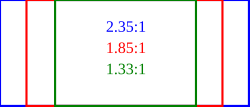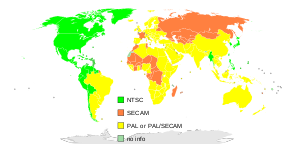Monday, July 28, 2008
Chinese Olympic Athletes in Beijing Olympic 2008
Good Luck to all Chinese Athletes in Beijing Olympic Game !!!祝全体中国运动员好 ��在北京奥运会 !!!Music: 《千山万水》 by 周杰倫《Qian Shan Wan Shui》 by Jay Chou
see more http://olympic-athletics.videos-hosting.com
Archery Olympics Techical Film
Technical film on the Olympic Archery competition held in Stone Mountain, USA, in 1996.
see more http://olympic-archery.videos-hosting.com
Saturday, July 26, 2008
Credit Report Repair: Strategy #3 Reduce Credit Balances
Credit Bureau Reports and Scores are inaccurate. You can improve your credit score by reducing the Credit limit to credit balance ratio. Repairing your credit score and credit report can save you thousands of dollars in interest payments. Repair your credit score today.
see more http://credit-bureau.videos-hosting.com/
Friday, July 25, 2008
How to Get Cheap Car Insurance Quotes
Want to know how to get cheap car insurance quotes? This video shows you how.
see more http://car.videos-hosting.com/
Thursday, July 24, 2008
Wednesday, July 23, 2008
Video display standards
Video display standards
[edit] Digital television
New formats for digital television broadcasts use the MPEG-2 video codec and include:
- ATSC - USA, Canada, etc.; a DVB video standard
- Digital Video Broadcasting (DVB) - European
- Integrated Services Digital Broadcasting (ISDB) - Japanese; also a DVB video standard
[edit] Analog television
Analog television broadcast standards include:
- Field-sequential color system - USA, Russia; obsolete
- Multiplexed Analogue Components (MAC) - Europe, obsolete
- Multiple sub-nyquist sampling Encoding (MUSE) - Japan, analog HDTV
- NTSC - USA, Canada, Japan, etc.
- PAL - Europe, Asia, Australia, etc.
- RS-343 (military)
- SECAM - France, ex-USSR, Central Africa
An analog video format consists of more information than the visible content of the frame. Preceding and following the image are lines and pixels containing synchronization information or a time delay. This surrounding margin is known as a blanking interval or blanking region; the horizontal and vertical front porch and back porch are the building blocks of the blanking interval.
Many countries are planning a digital switchover to cease using these analog formats via terrestrial television broadcast. However, analog television sets expecting these older standards as input will be able to display standard definition digital signals if coupled with a converter box.
Video formats
Video formats
There are different layers of video transmission and storage, each with its own set of formats to choose from.
For transmission, there is a physical connector and signal protocol ("video connection standard" below). A given physical link can carry certain "display standards" which specify a particular refresh rate, display resolution, and color space. There are a number of analog and digital tape formats, though digital video files can also be stored on a computer file system which have their own formats. In addition to the physical format used by the storage or transmission medium, the stream of ones and zeros that is sent must be in a particular digital video "encoding", of which a number are available.
Stereoscopic
Stereoscopic
Stereoscopic video can be created using several different methods:
- two channels — a right channel for the right eye and a left channel for the left eye. Both channels may be viewed simultaneously by using light-polarizing filters 90 degrees off-axis from each other on two video projectors. These separately polarized channels are viewed wearing eyeglasses with matching polarization filters.
- one channel with two overlayed color coded layers. This left and right layer technique is occasionally used for network broadcast, or recent "anaglyph" releases of 3D movies on DVD. Simple Red/Cyan plastic glasses provide the means to view the images discretely to form a stereoscopic view of the content.
- One channel with alternating left/right frames for each eye, using LCD shutter glasses which read the frame sync from the VGA Display Data Channel to alternately cover each eye, so the appropriate eye sees the correct frame. This method is most common in computer virtual reality applications such as in a Cave Automatic Virtual Environment, but reduces the effective video framerate to one-half of normal (for example, from 120Hz to 60Hz).
New HD DVD and Blu-ray Discs will greatly improve the sharpness and detail of the two-color 3D effect in color coded stereo programs. The first commercially available HD players were expected to debut at the 2006 NAB Show in Las Vegas in April. See articles Stereoscopy and 3D film.
Bit rate (digital only)
Bit rate (digital only)
Bit rate is a measure of the rate of information content in a video stream. It is quantified using the bit per second (bit/s or bps) unit or Megabits per second (Mbit/s). A higher bit rate allows better video quality. For example VideoCD, with a bit rate of about 1 Mbit/s, is lower quality than DVD, with a bit rate of about 5 Mbit/s. HDTV has a still higher quality, with a bit rate of about 20 Mbit/s.
Variable bit rate (VBR) is a strategy to maximize the visual video quality and minimize the bit rate. On fast motion scenes, a variable bit rate uses more bits than it does on slow motion scenes of similar duration yet achieves a consistent visual quality. For real-time and non-buffered video streaming when the available bandwidth is fixed, e.g. in videoconferencing delivered on channels of fixed bandwidth, a constant bit rate (CBR) must be used.
Video compression method (digital only)
Video compression method (digital only)
- Main article: Video compression
A wide variety of methods are used to compress video streams. Video data contains spatial and temporal redundancy, making uncompressed video streams extremely inefficient. Broadly speaking, spatial redundancy is reduced by registering differences between parts of a single frame; this task is known as intraframe compression and is closely related to image compression. Likewise, temporal redundancy can be reduced by registering differences between frames; this task is known as interframe compression, including motion compensation and other techniques. The most common modern standards are MPEG-2, used for DVD and satellite television, and MPEG-4, used for home video.
Video quality
Video quality
Video quality can be measured with formal metrics like PSNR or with subjective video quality using expert observation.
The subjective video quality of a video processing system may be evaluated as follows:
- Choose the video sequences (the SRC) to use for testing.
- Choose the settings of the system to evaluate (the HRC).
- Choose a test method for how to present video sequences to experts and to collect their ratings.
- Invite a sufficient number of experts, preferably not fewer than 15.
- Carry out testing.
- Calculate the average marks for each HRC based on the experts' ratings.
Many subjective video quality methods are described in the ITU-T recommendation BT.500. One of the standardized method is the Double Stimulus Impairment Scale (DSIS). In DSIS, each expert views an unimpaired reference video followed by an impaired version of the same video. The expert then rates the impaired video using a scale ranging from "impairments are imperceptible" to "impairments are very annoying".
Color space and bits per pixel
Color space and bits per pixel
Color model name describes the video color representation. YIQ was used in NTSC television. It corresponds closely to the YUV scheme used in NTSC and PAL television and the YDbDr scheme used by SECAM television.
The number of distinct colours that can be represented by a pixel depends on the number of bits per pixel (bpp). A common way to reduce the number of bits per pixel in digital video is by chroma subsampling (e.g. 4:4:4, 4:2:2, 4:2:0).
Aspect ratio
Aspect ratio
Aspect ratio describes the dimensions of video screens and video picture elements. All popular video formats are rectilinear, and so can be described by a ratio between width and height. The screen aspect ratio of a traditional television screen is 4:3, or about 1.33:1. High definition televisions use an aspect ratio of 16:9, or about 1.78:1. The aspect ratio of a full 35 mm film frame with soundtrack (also known as "Academy standard") is around 2.37:1.
Ratios where the height is taller than the width are uncommon in general everyday use, but do have application in computer systems where the screen may be better suited for a vertical layout. The most common tall aspect ratio of 3:4 is referred to as portrait mode and is created by physically rotating the display device 90 degrees from the normal position. Other tall aspect ratios such as 9:16 are technically possible but rarely used. (For a more detailed discussion of this topic please refer to the page orientation article.)
Pixels on computer monitors are usually square, but pixels used in digital video often have non-square aspect ratios, such as those used in the PAL and NTSC variants of the CCIR 601 digital video standard, and the corresponding anamorphic widescreen formats. Therefore, an NTSC DV image which is 720 pixels by 480 pixels is displayed with the aspect ratio of 4:3 (which is the traditional television standard) if the pixels are thin and displayed with the aspect ratio of 16:9 (which is the anamorphic widescreen format) if the pixels are fat.
Display resolution
Display resolution
- Main article: Display resolution
The size of a video image is measured in pixels for digital video, or horizontal scan lines and vertical lines of resolution for analog video. In the digital domain (e.g. DVD) standard-definition television (SDTV) is specified as 720/704/640×480i60 for NTSC and 768/720×576i50 for PAL or SECAM resolution. However in the analog domain, the number of visible scanlines remains constant (486 NTSC/576 PAL) while the horizontal measurement varies with the quality of the signal: approximately 320 pixels per scanline for VCR quality, 400 pixels for TV broadcasts, and 720 pixels for DVD sources. Aspect ratio is preserved because of non-square "pixels".
New high-definition televisions (HDTV) are capable of resolutions up to 1920×1080p60, i.e. 1920 pixels per scan line by 1080 scan lines, progressive, at 60 frames per second.
Video resolution for 3D-video is measured in voxels (volume picture element, representing a value in three dimensional space). For example 512×512×512 voxels resolution, now used for simple 3D-video, can be displayed even on some PDAs.
Interlacing
Interlacing
Video can be interlaced or progressive. Interlacing was invented as a way to achieve good visual quality within the limitations of a narrow bandwidth. The horizontal scan lines of each interlaced frame are numbered consecutively and partitioned into two fields: the odd field (upper field) consisting of the odd-numbered lines and the even field (lower field) consisting of the even-numbered lines. NTSC, PAL and SECAM are interlaced formats. Abbreviated video resolution specifications often include an i to indicate interlacing. For example, PAL video format is often specified as 576i50, where 576 indicates the vertical line resolution, i indicates interlacing, and 50 indicates 50 fields (half-frames) per second.
In progressive scan systems, each refresh period updates all of the scan lines. The result is a higher perceived resolution and a lack of various artifacts that can make parts of a stationary picture appear to be moving or flashing.
A procedure known as deinterlacing can be used for converting an interlaced stream, such as analog, DVD, or satellite, to be processed by progressive scan devices, such as TFT TV-sets, projectors, and plasma panels. Deinterlacing cannot, however, produce a video quality that is equivalent to true progressive scan source material.
Characteristics of video streams
Characteristics of video streams
[edit] Number of frames per second
Frame rate, the number of still pictures per unit of time of video, ranges from six or eight frames per second (frame/s) for old mechanical cameras to 120 or more frames per second for new professional cameras. PAL (Europe, Asia, Australia, etc.) and SECAM (France, Russia, parts of Africa etc.) standards specify 25 frame/s, while NTSC (USA, Canada, Japan, etc.) specifies 29.97 frame/s. Film is shot at the slower frame rate of 24frame/s, which complicates slightly the process of transferring a cinematic motion picture to video. The minimum frame rate to achieve the illusion of a moving image is about fifteen frames per second.
Description of video
Description of video
The term video (from Latin: "I see") commonly refers to several storage formats for moving eye pictures: digital video formats, including DVD, QuickTime, and MPEG-4; and analog videotapes, including VHS and Betamax. Video can be recorded and transmitted in various physical media: in magnetic tape when recorded as PAL or NTSC electric signals by video cameras, or in MPEG-4 or DV digital media when recorded by digital cameras.
Quality of video essentially depends on the capturing method and storage used. Digital television (DTV) is a relatively recent format with higher quality than earlier television formats and has become a standard for television video. (See List of digital television deployments by country.)
3D-video, digital video in three dimensions, premiered at the end of 20th century. Six or eight cameras with realtime depth measurement are typically used to capture 3D-video streams. The format of 3D-video is fixed in MPEG-4 Part 16 Animation Framework eXtension (AFX).
In the UK, Australia, The Netherlands, Finland, Hungary and New Zealand, the term video is often used informally to refer to both Videocassette recorders and video cassettes; the meaning is normally clear from the context.
History
History
Video technology was first developed for cathode ray tube television systems, but several new technologies for video display devices have since been invented. Standards for television sets and computer monitors have tended to evolve independently, but advances in computer performance and digital television broadcasting and recording are producing some convergence.
Computers can now display television and film-style video clips and streaming media, encouraged by increased processor speed, storage capacity, and broadband access to the Internet. General-purpose computing hardware can now be used to capture, store, edit, and transmit television and movie content, as opposed to older dedicated analog technologies.




